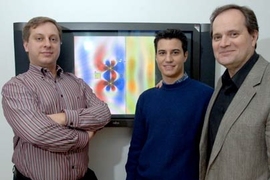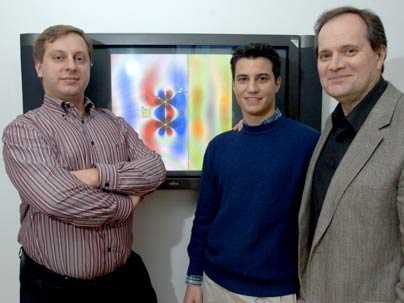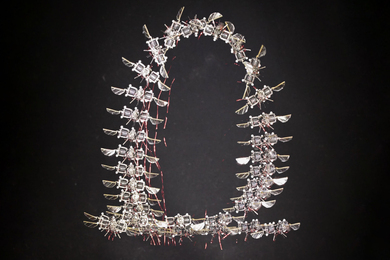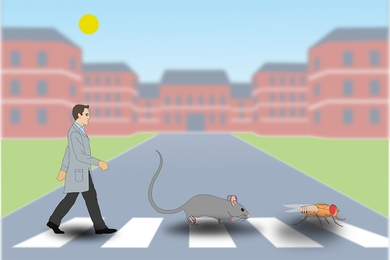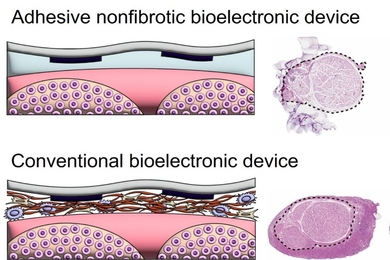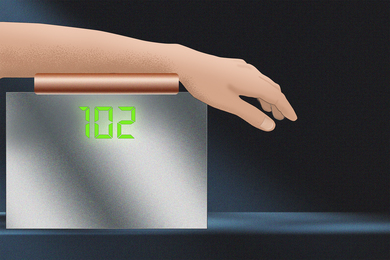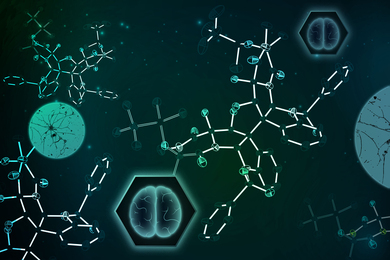Recharging your laptop computer, your cell phone and a variety of other gadgets may one day be as convenient as surfing the web--wirelessly.
Marin Soljacic, an assistant professor in MIT's Department of Physics and Research Laboratory of Electronics, will describe his and his MIT colleagues' research on that wireless future on Tuesday, Nov. 14 at the American Institute of Physics Industrial Physics Forum in San Francisco.
Like many of us, Soljacic (pronounced Soul-ya-CHEECH) often forgets to recharge his cell phone, and when it is about to die it emits an unpleasant noise. "Needless to say, this always happens in the middle of the night," he said. "So, one night, at 3 a.m., it occurred to me: Wouldn't it be great if this thing charged itself?" He began to wonder if any of the physics principles he knew of could turn into new ways of transmitting energy.
After all, scientists and engineers have known for nearly two centuries that transferring electric power does not require wires to be in physical contact. Electric motors and power transformers contain coils that transmit energy to each other by the phenomenon of electromagnetic induction. A current running in an emitting coil induces another current in a receiving coil; the two coils are in close proximity, but they do not touch.
Later, scientists discovered electromagnetic radiation in the form of radio waves, and they showed that another form of it--light--is how we get energy from the sun. But transferring energy from one point to another through ordinary electromagnetic radiation is typically very inefficient: The waves tend to spread in all directions, so most of the energy is lost to the environment.
Soljacic realized that the close-range induction taking place inside a transformer--or something similar to it--could potentially transfer energy over longer distances, say, from one end of a room to the other. Instead of irradiating the environment with electromagnetic waves, a power transmitter would fill the space around it with a "non-radiative" electromagnetic field. Energy would only be picked up by gadgets specially designed to "resonate" with the field. Most of the energy not picked up by a receiver would be reabsorbed by the emitter.
In his talk, Soljacic will explain the physics of non-radiative energy transfer and the possible design of wireless-power systems.
While rooted in well-known laws of physics, non-radiative energy transfer is a novel application no one seems to have pursued before. "It certainly was not clear or obvious to us in the beginning how well it could actually work, given the constraints of available materials, extraneous environmental objects, and so on. It was even less clear to us which designs would work best," Soljacic said. He and his colleagues tackled the problem through theoretical calculations and computer simulations.
With the resulting designs, non-radiative wireless power would have limited range, and the range would be shorter for smaller-size receivers. But the team calculates that an object the size of a laptop could be recharged within a few meters of the power source. Placing one source in each room could provide coverage throughout your home.
Soljacic is looking forward to a future when laptops and cell phones might never need any wires at all. Wireless, he said, could also power other household gadgets that are now becoming more common. "At home, I have one of those robotic vacuum cleaners that cleans your floors automatically," he said. "It does a fantastic job but, after it cleans one or two rooms, the battery dies." In addition to consumer electronics, wireless energy could find industrial applications powering, for example, freely roaming robots within a factory pavilion.
Soljacic's colleagues in the work are Aristeidis Karalis, a graduate student in the Department of Electrical Engineering and Computer Science, and John Joannopoulos, the Francis Wright Davis Professor of Physics. Both are also affiliated with the Research Laboratory of Electronics. The work is funded in part by the Materials Research Science and Engineering Center program of the National Science Foundation.
A version of this article appeared in MIT Tech Talk on November 15, 2006 (download PDF).
